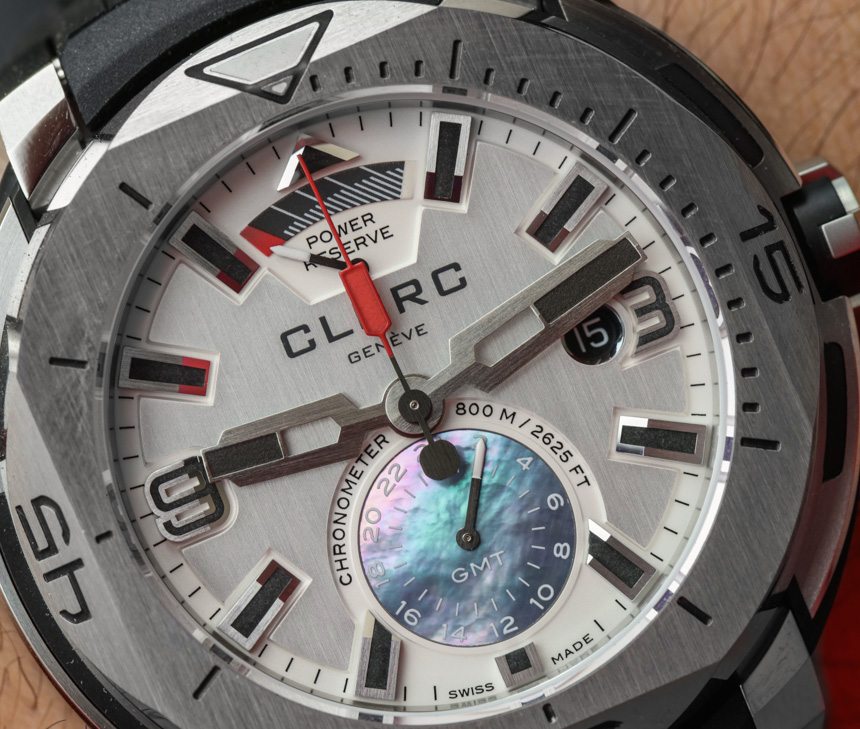
Over the years, I have made no secret of the fact I am a big fan of GMT complications, even though I do not find myself traveling across time zones much these days (a good thing, in my book). I also have a tendency towards the sportier divers and am always intrigued by a unique case design. Wouldn’t you know, there was a watch introduced at Baselworld 2015 that actually touches on all of those different points? When the opportunity came up to spend some time with the Clerc Hydroscaph GMT Power Reserve Chronometer, I leaped at it without a second thought.
While the case is the obvious starting focal point for the Clerc Hydroscaph GMT Power Reserve Chronometer, I actually want to dive in to some of the dial details that really captivated me in my time with the watch. As is evident to anyone who follows me on Instagram, I really got into the mother-of-pearl that is used on the GMT subdial. There is just something about that shimmering oil-slick style rainbow that the material gives that I rather enjoy. Here, also, it has a bit more of a blue cast to it, which is aces for me. It’s also worth noting that the GMT hand clicks over only at the change of the hour on the main handset – another tidy detail that I dug once I noticed it. The next detail that I really got into was the handset – all of them.

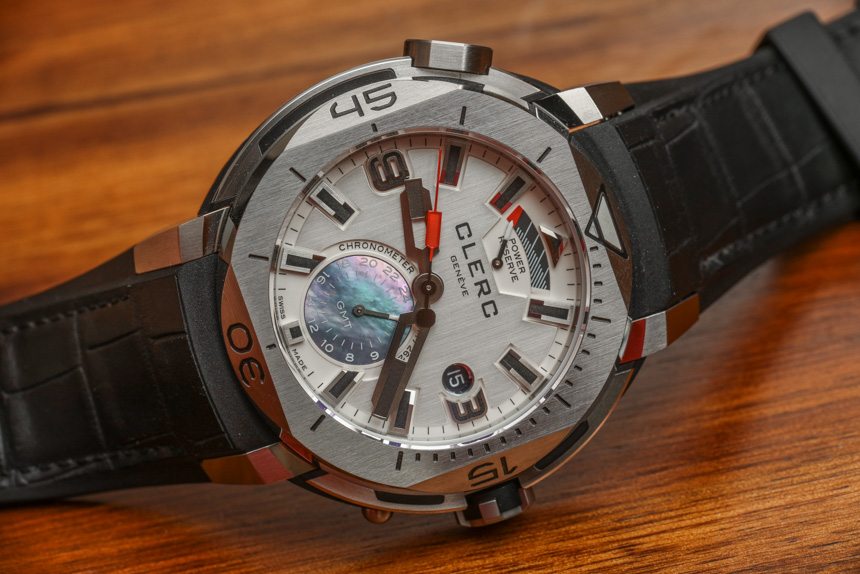
As my pal Victor Marks pointed out, those are no small hands on the Clerc Hydroscaph GMT. This is not just the fact that they extend logically to the appropriate tracks and are nicely proportioned to one another. No, the main handset is also rather wide. Their matte finish makes them stand out sharply against the vertically brushed dial, and there is absolutely no trouble picking them out to read the time in a hurry. What about when they overlap? I mean, they are both large. And yes, the minute hand can obscure the hour hand, except for a small detail – the cutouts on the hands.
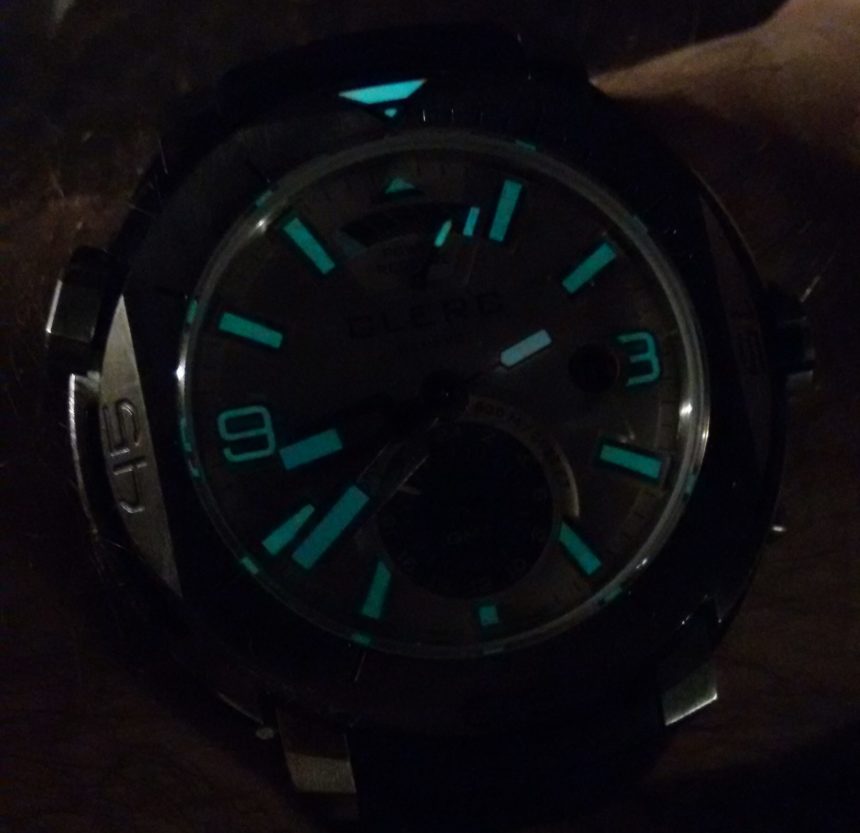
You see, when the main hands overlap each other, you can still see a small bit of the dark luminous paint on the hour hand peeking through, confirming that, yes, it is indeed there. Those cutouts on the hands are also perfectly set to align with the seconds hand. It is these sorts of details that show the attention and planning that go into a dial like this, and are truly enjoyable. That seconds hand also had another surprise awaiting me – it was actually lumed. Not only that, it’s lumed in a different shade (orange) than the hands and indices (green). If that’s not enough for you, it turns out the power reserve and GMT hands are also lumed. Totally unnecessary, but boy oh boy, do I like having the extra bits of glory. And hey, you never know when you might need to get the movement wound in the middle of the night, right? Then again, not too likely with a 42-hour reserve on tap and automatic winding. The exclusive C610 movement is a base ETA movement with a module that can be partially seen through the caseback.
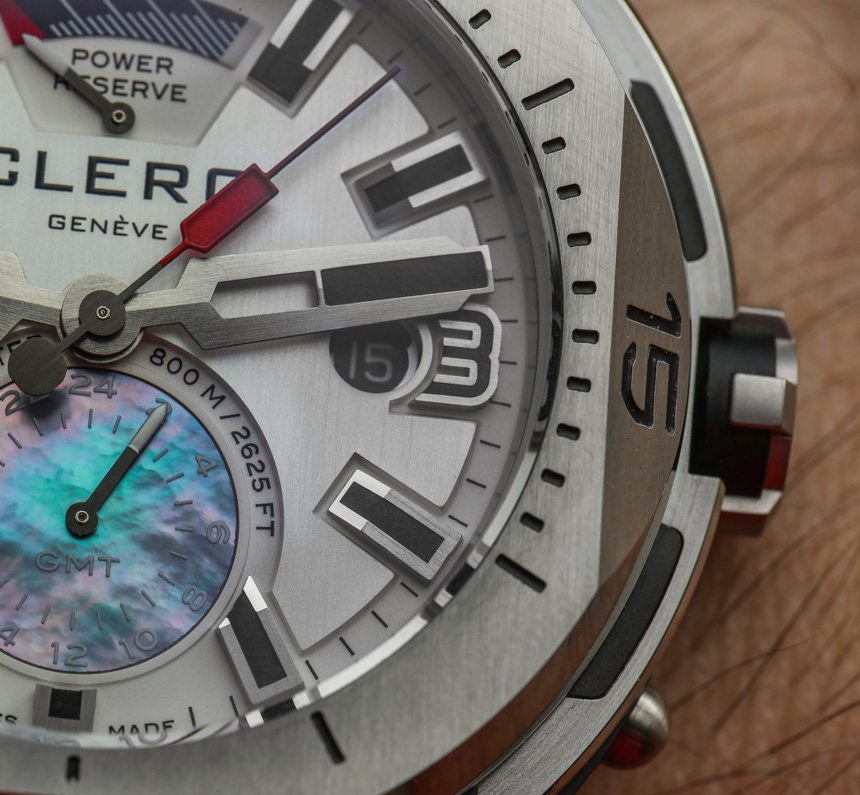
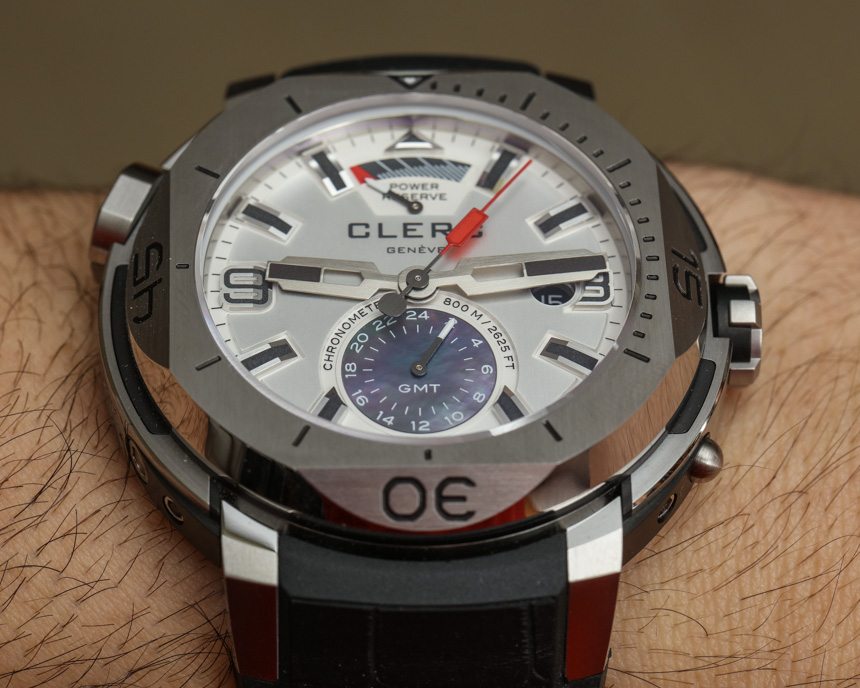
I was about to say I was done talking about the dial of the Clerc Hydroscaph GMT, and then I took another look at it, and realized there’s still plenty more to like. For instance, the date display. It’s over at 3 o’clock, and done with a dark date wheel so it is more-or-less unobtrusive. What I want to call out is the interaction with the numeral 3. On most watches, the intersection of a date display and an index results in a chopped-off index, or a date window that has lots of blank space around it. Here, on the Clerc Hydroscaph GMT Power Reserve Chronometer watch, the two elements actually nestle in to one another, with the font used for the 3 working perfectly to achieve this effect.
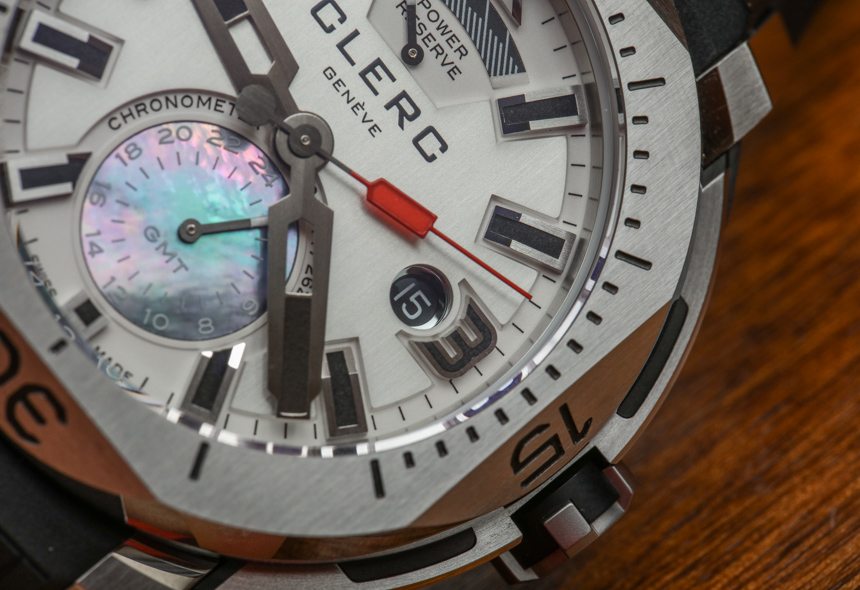
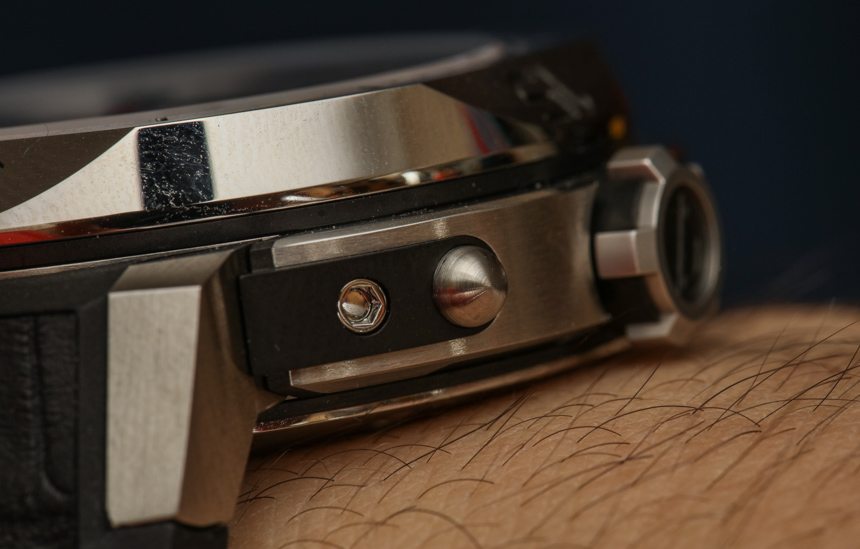
The only thing that you lose out on with that placement are the bevels that show up on the other indices of the Clerc Hydroscaph GMT Power Reserve Chronometer. Along with giving some more dimensionality to the applied bits, it allows for a different finishing – matte on the surfaces that are parallel to the dial, and then polished on the angles, which gives you a lovely bit of sparkle to things – a nice contrast to the overall flatter finish of the dial – that works quite well with that mother-of-pearl.
Of course, those bevels also tie things in to the bezel of the Clerc Hydroscaph GMT Power Reserve Chronometer, which – along with the brand’s logo – is probably one of the most recognizable elements that identify the watch as a Clerc production. You might be wondering how one would grip that bezel and set it, as the Clerc Hydroscaph GMT Power Reserve Chronometer is a diver, of course, with an 800m water-resistance (and a helium escape valve – something none of us will likely ever need). The answer to that question is at 10 o’clock. Flip up the lever of that crown so that it functions somewhat like a key (see the image below), and now you can spin it around to your heart’s content in very precise one-click increments.
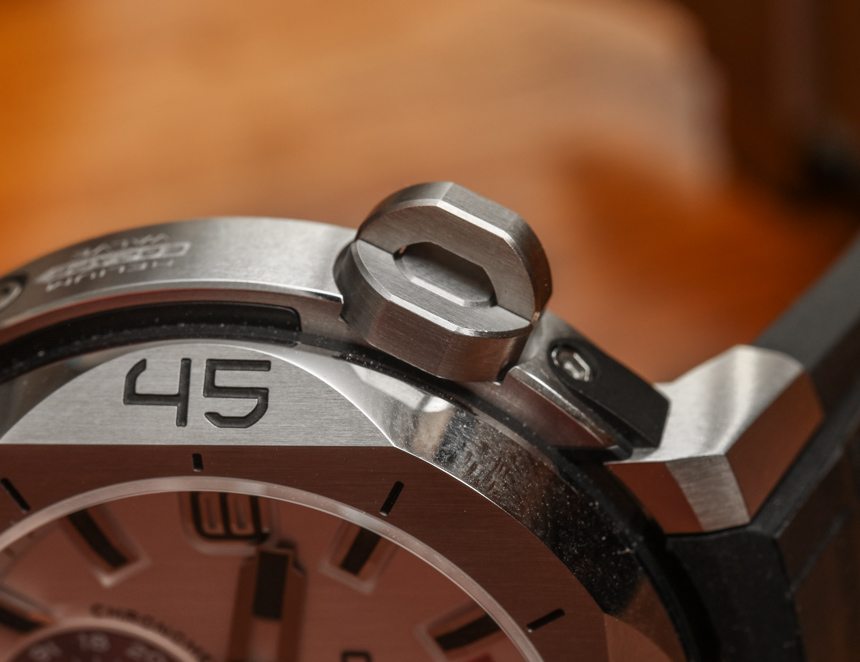
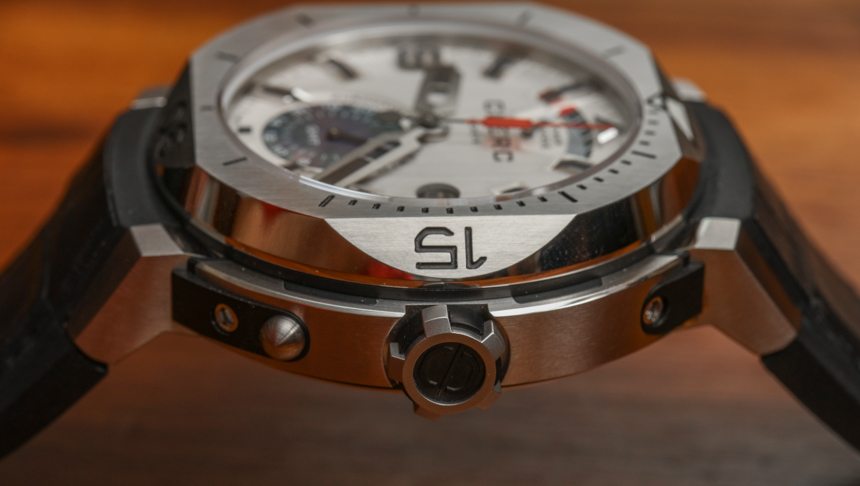
Rounding out the case of the Clerc Hydroscaph GMT Power Reserve Chronometer, you have the aforementioned HEV down at 8 o’clock, and the ball bearing-like pusher at 4 o’clock for setting the GMT register. No worries about accidentally changing it, as this takes a very firm press to advance. Then, of course, at 3 o’clock you have the crown for setting the date, time, and winding the movement (which is then reflected on the power reserve on the top of the dial, of course). After the very clever bezel lock, the standard screw-down crown feels almost pedestrian. Then again, if you’re going for an 800m water-resistance rating, the crown probably is not the place to try to be clever.
